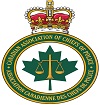Relevant Case Law
U.S. Supreme Court Cases
Discussion of Recent Supreme Court Jurisprudence
In the past five years, the Supreme Court has decided several cases on technological search and seizure. In United States v. Jones, decided in 2012, the Supreme Court held that the use of a GPS tracker to monitor the location of a vehicle constituted a search for purposes of the Fourth Amendment. In this case, law enforcement officers planted a GPS tracker on a suspect’s car while it was parked in a public place and monitored its movements in detail over the course of 28 days. While all nine justices agreed that these actions constituted a search, they disagreed on the rationale for this holding. Under the opinion of the Court, written by Justice Scalia and joined by Justices Kennedy, Thomas, Sotomayor, and Chief Justice Roberts, law enforcement’s actions constituted a search because, in addition to monitoring the GPS tracker over a period of time, they physically attached the device to the car. Since law enforcement “physically occupied private property for the purpose of obtaining information,” their activities constituted a search for purposes of the Fourth Amendment, independent of the specificity or duration of information obtained. U.S. v. Jones, 132 S. Ct. 945, 949 (2012).
However, Justice Alito, joined with Justices Ginsburg, Breyer, and Kagan, held that law enforcement actions in this case constituted a search because “the use of longer term GPS monitoring in investigations of most offenses impinges on expectations of privacy.” U.S. v. Jones, 132 S. Ct. at 964. Since the monitoring in this case provided extensive, detailed information over a relatively long period of time, it contradicted long-standing societal expectations about the types of surveillance conducted by law enforcement. Although she concurred with the opinion of the Court, Justice Sotomayor wrote separately to say that, while the detailed information provided through GPS monitoring in this case “invad[ed] privacy interests long afforded, and undoubtedly entitled to, Fourth Amendment protection,” she did not decide the case on that basis because the physical invasion of property provided a narrower grounds for decision. U.S. v. Jones, 132 S. Ct. at 954.
Although Jones may have a profound impact on Fourth Amendment jurisprudence, its full effects are still not known. Both scholars and lower court judges have been particularly concerned because Justice Sotomayor’s concurrence explicitly called the third-party doctrine into question, however no other Justice joined this view in Jones. The third-party doctrine, i.e., that individuals do not have Fourth Amendment protections in information that has been shared with other people or organizations, is one important basis for much of our current rules regarding law enforcement use of commercial data. However, to date, the third-party doctrine remains in effect at the federal level. See also, SCOTUS Blog Review: http://www.scotusblog.com/case-files/cases/united-states-v-jones/
The Supreme Court most recently addressed technological search and seizure in Riley v. California. The issue presented in that case was whether law enforcement could search the information stored on an individual’s cell phone after he had been arrested. The Court held that “officers must generally secure a warrant before conducting” searches of cell phones. Riley v. California, 134 S.Ct. 2473, 2485 (2014). In distinguishing prior decisions allowing searches of anything found on an arrestee’s person, the opinion focused primarily on the broad scope of information that can be contained within a cell phone, particularly a smart phone. Not only does the suspect’s cell phone in Riley provide more information than would be contained within analogous physical objects (such as a personal calendar), the pervasive nature of cell phone data collection makes it possible to gain a far more complete picture of the user’s life.
Defendants have already started using the Riley decision in attempts to prevent long-standing case law developed for physical searches and seizures from being applied to searches of digital information. As case law continues to develop in this area, the application of this case to other areas of technological search and seizure will become clearer. See also SCOTUS Blog review: http://www.scotusblog.com/case-files/cases/riley-v-california/
Information about Supreme Court Cases
The Supreme Court of the United States maintains a webpage providing information about their docket, schedule, and upcoming cases. Audio recordings and transcripts of oral arguments are available, and opinions are published on this site soon after they are released.
SCOTUSblog is one of the most respected sources of up-to-the-minute news about the Supreme Court. The first blog to ever receive a Peabody Award, they provide information about cases before the court, including briefs, transcripts of oral arguments, and decisions. In addition, they provide expert commentary and organize online symposia focusing on important recent decisions. See also, Cell phone privacy symposium: http://www.scotusblog.com/category/special-features/cell-phone-privacy-symposium/
The Oyez Project, housed at IIT Chicago-Kent College of Law, provides both modern and historical information on the Supreme Court. This includes summary descriptions and full texts of cases, as well as timelines of cases and recordings of oral arguments.
Other Case Law Resources
Google Scholar has an option to perform full-text searches of state and federal case law on both the intermediate appellate and supreme court level. Searches can be easily narrowed by date and court, and it is possible to search within cases that cite a particular decision. There is also an option to create an alert notifying the user of new cases. Google Scholar can also be used to search for academic literature, including law review articles. Google scholar provides free, open-source access to case law, and free access to the academic literature where available.
Court Listener is a searchable database of both federal and state case law, including information about the authorities cited by each case, and the subsequent cases in which it was cited. Where available, users can also listen to oral arguments for relevant cases. Additionally, users can create alerts to keep them up to date on emerging cases in a particular area.





